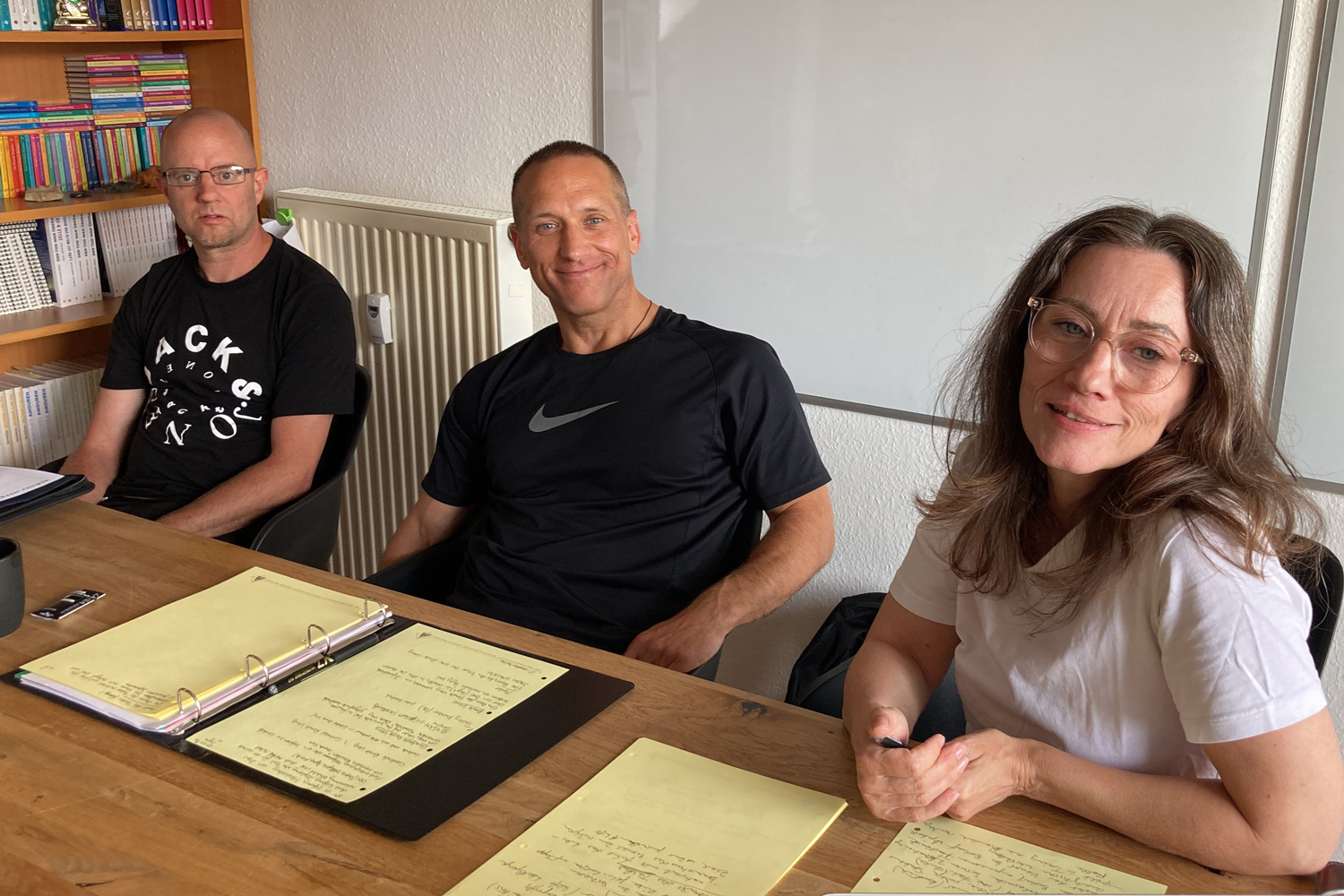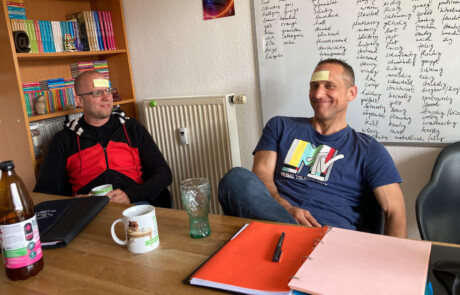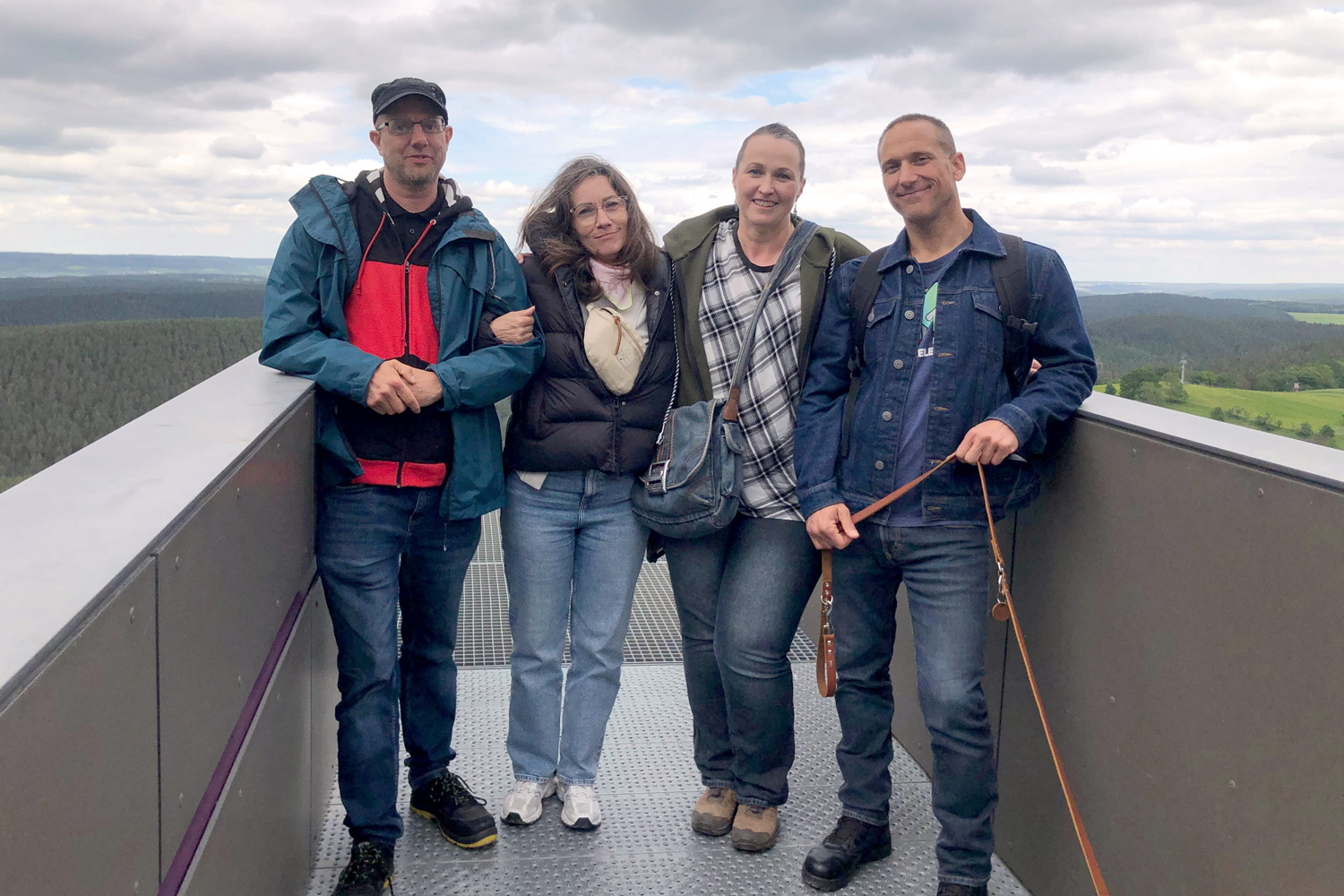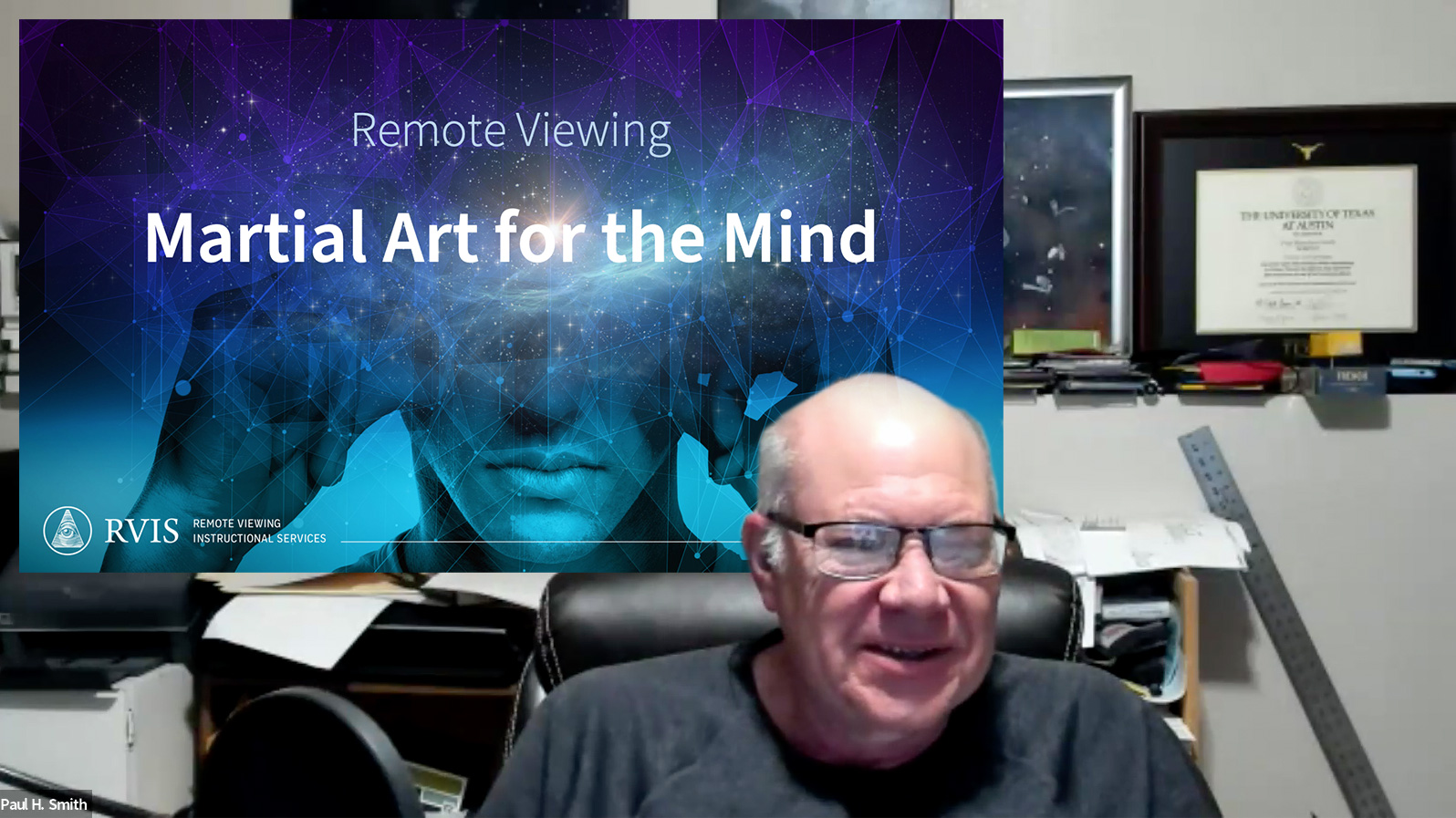Four people and a dog are walking slowly and contemplatively through nature, with paper and pencil in hand. They barely talk to each other, but all their senses are sharpened to absorb and record the impressions of their surroundings. Later, they all sit together in the classroom, writing hundreds of words densely on large whiteboards. “Now I really understand it!” says one student.

At another time, the students sit in the practice rooms, each with a monitor, and practice step by step the secure path through a remote viewing session. Every term, every move is observed, commented on, and evaluated together. Questions and uncertainties can be discussed and corrected directly. At the end of the week, each of them takes home a bulging binder filled with handwritten notes, essays, and more than a dozen practice sessions—and an envelope with the first homework assignment. The week-long in-house training of the course is over, and the homework phase now lies ahead of them.
The Original – CRV Training with RVIS
The German-language training program for original Controlled Remote Viewing (CRV) has now been established for three years. It is termed “original” because the program teaches the initial CRV method as it was invented by Swann/Puthoff in the early 1980s.
Under the headline “Learn the Original from the Original,” RVIS began establishing a regular training program in Germany in 2022 [—Here is a report on the training concept and the first German course in 2022—]. Jana Rogge, who herself was directly trained by Paul H. Smith (after and alongside several other RV trainings), took on the assistance and organization on-site.
The “special ingredient” that makes RVIS training so exceptional is not only the very intensive and detailed education but also a learning concept in which students are individually guided at every step of their learning process. This is the only way to impart a complete and well-founded understanding of the methodology. Therefore, RVIS courses are usually limited to a staff-student ratio of 1:1 or 1:2, with a maximum of 4 students per course. Those who complete the first—admittedly sometimes demanding and very intensive—course week must then master a series of supervised homework assignments to solidify their understanding of the learned structure before finally earning the “Basic Course” certificate.
RVIS training is rightfully considered the toughest program of its kind—therefore sometimes referred to as the “Gold Standard”—but its students know they are engaging in a demanding educational program that, even at its best, takes many months to advance to Level VI, and which does not end after leaving the classroom following the intensive training weeks. It is therefore not surprising that a significant portion of the people who come to Paul H. Smith to learn the original CRV method are not encountering the world of remote viewing for the first time. Often, these are viewers who are already working with other methods and who, through their own research on methods and history, are seeking a better understanding of the technique.
Remote Viewing – Remote Training?
There are reasons why Paul H. Smith, with RVIS, has remained unwavering over the years in offering the high-end version of his training only in personal on-site courses. Although he also produced a training DVD set and provides introductory courses online through the Rhine Institute, a truly comprehensive and thorough training only works if enough 1:1 time can be spent with the students. This allows for step-by-step monitoring, commentary, and direct error correction during sessions. In addition, there are numerous accompanying exercises that help build important foundations and are essential for understanding the overall concepts.

This year, there were some organizational hurdles, and Paul was unable to come to Germany in person. The on-site instruction was taken over by Jana Rogge. Assisting her, Arbo von Bergmann traveled from Berlin, himself an RVIS student who has many years of valuable experience as a monitor.
Nevertheless, Paul joined virtually – giving a lesson via Zoom and acting as a daily companion in the course’s internal Telegram group. He will also continue to supervise the homework.
A highlight of the RVIS courses is a live lecture followed by a Q&A session with Hal Puthoff himself. Once again, Hal was able to make time for us and patiently answer all the curious questions.
The experiences of the past years have also led us to extend the course program from six to seven days. This allows more time to address questions and provide background information.
Seven Days of Intense Program
During the online lessons and at a shared evening in the pizzeria, the new students had the opportunity to meet some of the former students. They could get to know each other, exchange experiences, and make contacts for joint practice sessions. Networking is very important to us—no one should sit at home alone after the training. Former and new students stay in touch and continue practicing together, as for many, the journey does not end with the experience of the basic course. It can be compared to attending a driving school: acquiring a driver’s license is just the beginning of gaining experience in road traffic under various conditions, and it takes time to become a “seasoned driver” who can handle every situation safely and intuitively.
Outlook
We are pleased with the results from the first three years of courses in Germany. Eleven exceptionally good German viewers have proven how valuable a solid education can be. Many of them will continue the journey with us. The network is growing…
The course program continues after the summer break. At least one Basic and one Intermediate course are planned for the fall, and Paul H. Smith will come to Germany again.
Further training programs, both for Germany and in English for online courses, are in planning and development. More on this later.
If you would like to be notified as soon as we plan new courses, please feel free to leave your email address. (e-Mail).
A week of intensive work, but also fun – participants of the 2024 CRV Basic Course pose for a group photo during one of the excursions.
Originally designed for the remote viewers of the military unit in Ft. Meade, USA, CRV is a working protocol that makes remote viewing applicable to anyone and suitable for operational use. The former “psi spies” of the Star Gate unit are the forefathers of the remote viewing now taught in the civilian sector, and Paul H. Smith is one of them. He is the longest-serving CRV instructor worldwide, having trained other viewers in the unit during his seven years of service in the “Star Gate” program, including now well-known RV personalities like Lyn Buchanan and David Morehouse.
After Remote Viewing was declassified in 1995, he, like some of his former colleagues, established himself as an RV instructor for the civilian sector. However, while many others began to alter the method according to their own ideas, he strictly adhered to the original version. His company, “Remote Viewing Instructional Services, Inc.” (RVIS), has since been the only provider of an authentic and comprehensive training program modeled after Ingo Swann’s methods.
The German-language RVIS courses follow the original curriculum and are organized locally by Jana Rogge.
A highlight of the course week is always the live lecture by Hal Puthoff followed by a Q&A session. Despite the time difference, we were able to include it in the course program. Speaking with Hal in person and not just watching a recording is always something special.
Even though he couldn’t be there in person, Paul joined us virtually – for an additional lesson via Zoom and as a daily companion in the course’s internal Telegram group. He will also continue to supervise the homework.
Arbo von Bergmann, a German remote viewer with extensive experience in monitoring and project work, took on the role of course assistant and served as the second monitor.
Outbounder time! The students got to know the work of other remote viewers in a live outbounder setting while simultaneously contributing a valuable dataset to one of the ongoing long-term studies.
Flying saucers and bent spoons … Remote viewers are always curious and up for any fun.
Did someone say homework…? Should I just eat it? (Course mascot Cane)









































